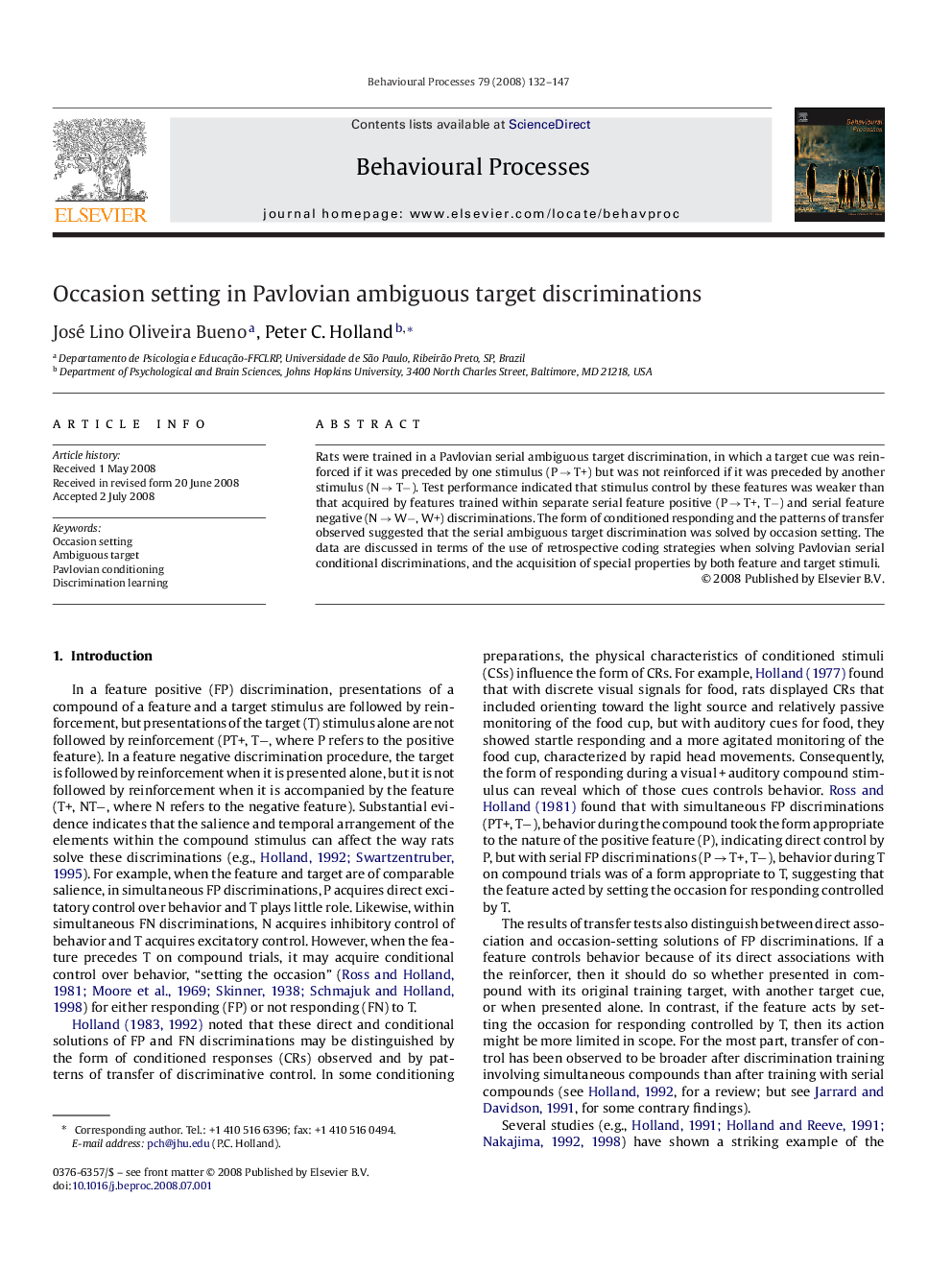| Article ID | Journal | Published Year | Pages | File Type |
|---|---|---|---|---|
| 2427669 | Behavioural Processes | 2008 | 16 Pages |
Rats were trained in a Pavlovian serial ambiguous target discrimination, in which a target cue was reinforced if it was preceded by one stimulus (P → T+) but was not reinforced if it was preceded by another stimulus (N → T−). Test performance indicated that stimulus control by these features was weaker than that acquired by features trained within separate serial feature positive (P → T+, T−) and serial feature negative (N → W−, W+) discriminations. The form of conditioned responding and the patterns of transfer observed suggested that the serial ambiguous target discrimination was solved by occasion setting. The data are discussed in terms of the use of retrospective coding strategies when solving Pavlovian serial conditional discriminations, and the acquisition of special properties by both feature and target stimuli.
